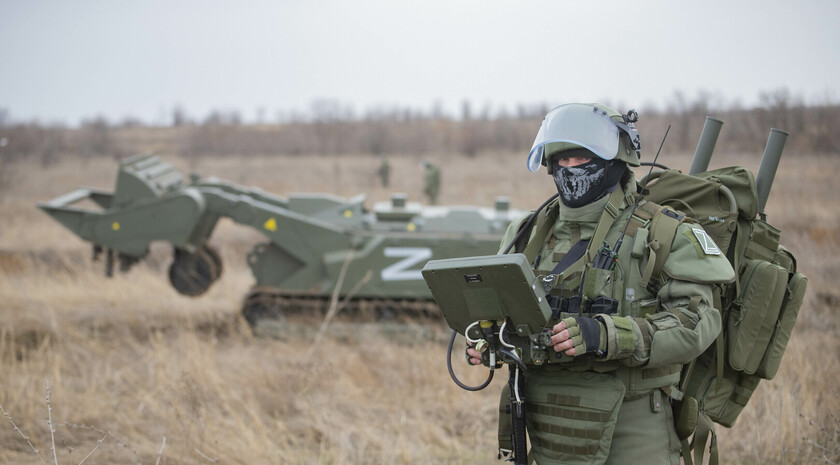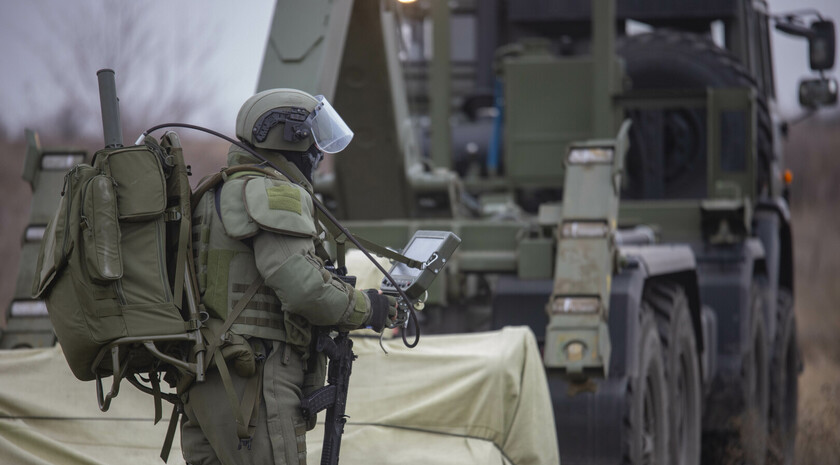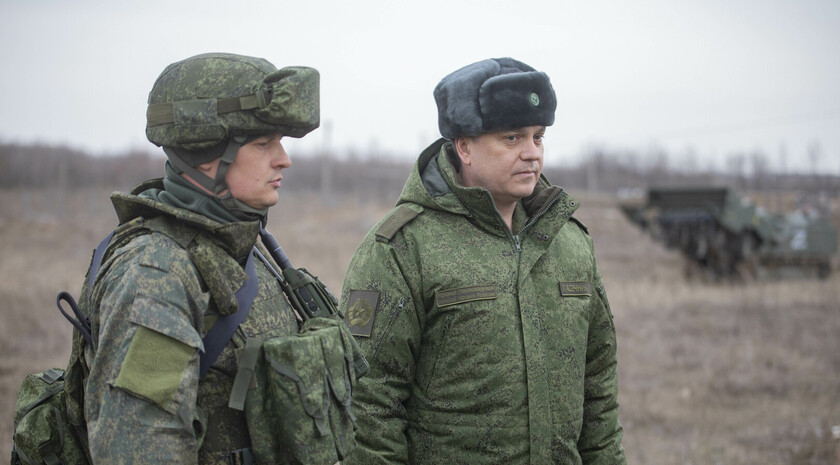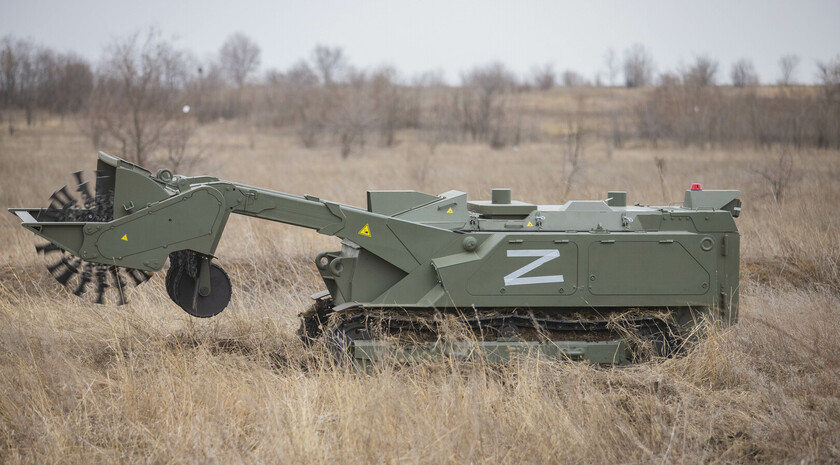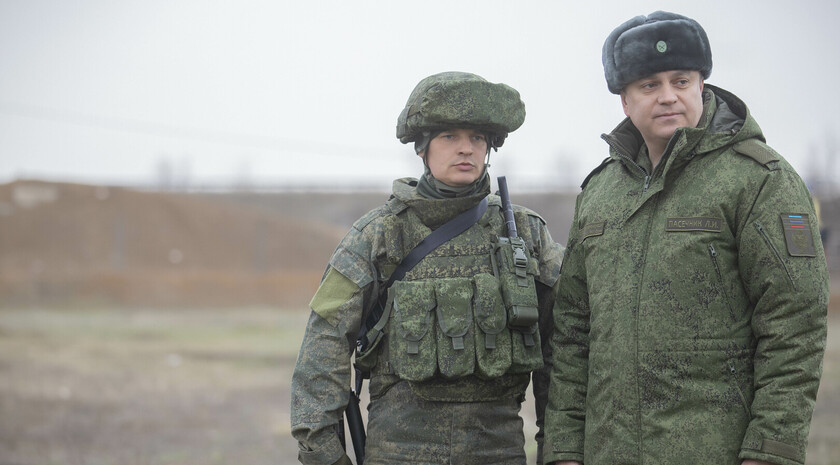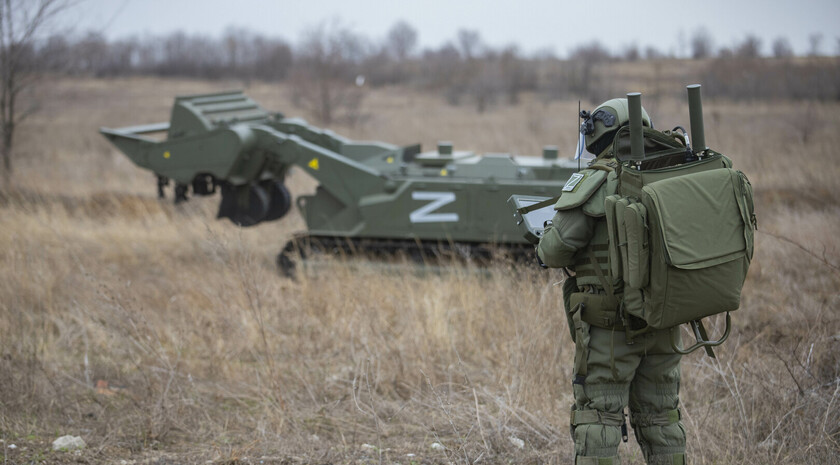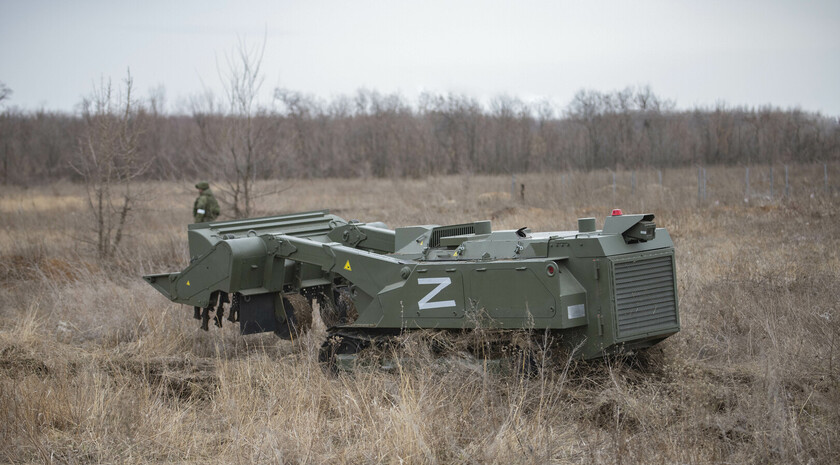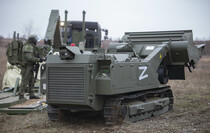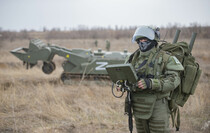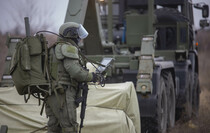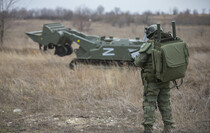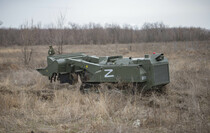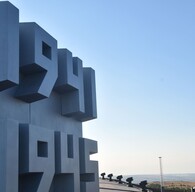LPR Head Leonid Pasechnik has inspected a testing of the Uran-6 mine-clearing robot supplied by Russia.
"I have repeatedly said that the enemy retreats leaving scorched earth behind, such as blown up bridges, mined critical infrastructure, that is why it is important to carry out mine clearance operations on the liberated territories today," he said.
Pasechnik said he addressed Russia asking to assist in the demining. In response, Russia has sent in a highly qualified demining team equipped with the Uran-6 mine-clearing robot.
The robot can clear a 6-meter wide passage in a minefield, enough for vehicles and crawled-mounted equipment to pass through. It is remotely controlled from a distance of 50 meters from a covered position and 150 meter from an open position.
The commender of the engineer unit, call-sign Lex, said that the robot proved to be a highly effective tool in Syria.
Uran-6 military robot is designed to operate in dangerous combat situations, keeping soldiers out of harm's way. The Uran-6 mine-clearing robot is able to operate continuously for up to five hours. It can overcome 1.2m-high obstacles and cross 1.5m-wide trenches. It is survivable to mine explosions of 60kg of TNT and can clear anti-personnel mines and hazardous substances weighing from 1kg to 4kg of TNT.
The Ukrainian government launched the so-called anti-terrorist operation against Donbass in April 2014. The members of the Contact Group have announced ceasefire more than 20 times since the autumn of 2014. Kiev forces regularly violated the truce opening fire with large caliber artillery, mortars and tank guns which were to have been withdrawn from the contact line under the accords. *t

